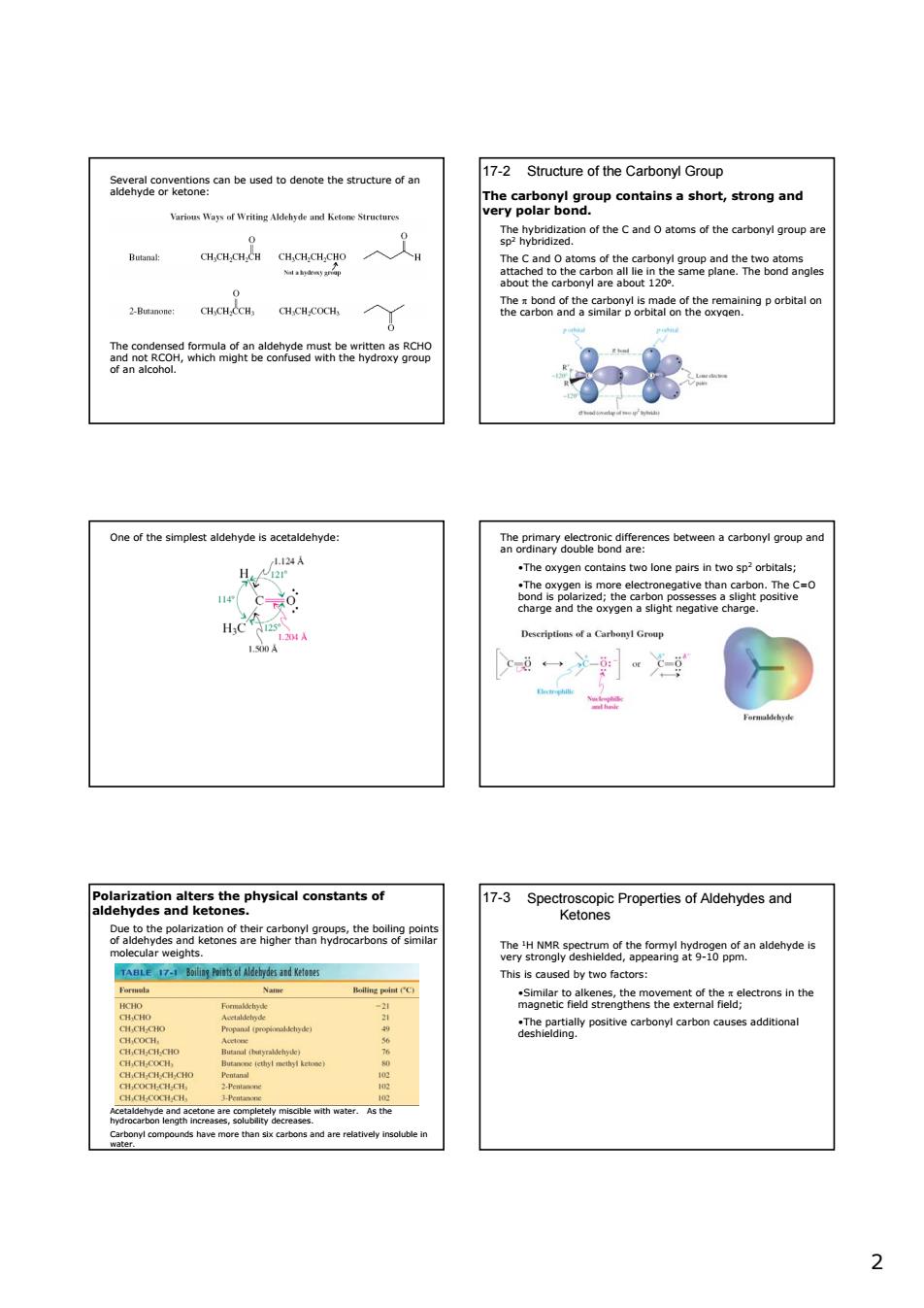正在加载图片...

17-2 Structure of the Carbonyl Group toteeupcontaihnsasho rt,strong and y0aaiom9 ow up入又, 9≥9c8 he&edmsarterratgenot他enaeannopobitalon o 影 One of the simplest aldehyde is acetaldehyde .The oxygen contains two lone pairs in two sp?orbitals o6 H.e Deseriptiens of a Carbenyl Group 1-rieoyde ad IeorR,aesheaed.heeamgat6nomanaaenvoes his is caused by two fact lypoitvecarbonyncaus ibie with wster.As the 2 2 Several conventions can be used to denote the structure of an aldehyde or ketone: The condensed formula of an aldehyde must be written as RCHO and not RCOH, which might be confused with the hydroxy group of an alcohol. 17-2 Structure of the Carbonyl Group The carbonyl group contains a short, strong and very polar bond. The hybridization of the C and O atoms of the carbonyl group are sp2 hybridized. The C and O atoms of the carbonyl group and the two atoms attached to the carbon all lie in the same plane. The bond angles about the carbonyl are about 120o. The π bond of the carbonyl is made of the remaining p orbital on the carbon and a similar p orbital on the oxygen. One of the simplest aldehyde is acetaldehyde: The primary electronic differences between a carbonyl group and an ordinary double bond are: •The oxygen contains two lone pairs in two sp2 orbitals; •The oxygen is more electronegative than carbon. The C=O bond is polarized; the carbon possesses a slight positive charge and the oxygen a slight negative charge. Polarization alters the physical constants of aldehydes and ketones. Due to the polarization of their carbonyl groups, the boiling points of aldehydes and ketones are higher than hydrocarbons of similar molecular weights. Acetaldehyde and acetone are completely miscible with water. As the hydrocarbon length increases, solubility decreases. Carbonyl compounds have more than six carbons and are relatively insoluble in water. Spectroscopic Properties of Aldehydes and Ketones 17-3 The 1H NMR spectrum of the formyl hydrogen of an aldehyde is very strongly deshielded, appearing at 9-10 ppm. This is caused by two factors: •Similar to alkenes, the movement of the π electrons in the magnetic field strengthens the external field; •The partially positive carbonyl carbon causes additional deshielding